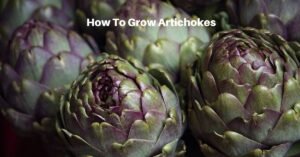Deadheading is a simple way to care for your plans, but it can have a large impact. It simply involves removing spent or faded flowers from your plants. Even though it can seem purely aesthetic at first glance, the benefits go far beyond appearances. This technique encourages new blooms, promotes plant health, and keeps your garden looking vibrant and tidy throughout the growing season.
The Benefits of Deadheading Plants
Deadheading offers numerous advantages for both your plants and your garden. Here are some key benefits:
- Encourages More Blooms: Many flowering plants produce seeds after their flowers fade, which signals to the plant that its reproductive goal is achieved. Removing spent blooms redirects the plant’s energy from seed production to creating new flowers, resulting in a longer flowering season.
- Improves Plant Health: Deadheading helps prevent the spread of diseases. Old flowers often harbor pests or pathogens that might infect the rest of the plant. Regular removal ensures a healthier plant!
- Enhances Garden Aesthetics: A garden filled with vibrant, fresh blooms looks more appealing than one cluttered with faded, wilting flowers. Deadheading maintains a neat and tidy appearance, making your garden a joy to look at.
- Reduces Self-Seeding: Some plants, if left to seed, can become invasive or overcrowded. Deadheading prevents unwanted self-seeding, so you can stay in control of your garden layout.
- Encourages Perennial Growth: For certain perennials, deadheading can promote a stronger, more vigorous plant for the following growing season.
These benefits make deadheading a great practice to help you maintain a thriving, beautiful outdoor space.
The Right Time to Deadhead
Timing makes a huge difference when it comes to deadheading plants. Understanding the best times for this maintenance activity will ensure that your efforts produce the desired results: healthier plants and longer blooming periods.
General Guidelines for Deadheading Timing
We’lll get into some specifics, but these general tips for timing work well for just about any plant you’d want to deadhead:
Throughout the Growing Season: Most plants benefit from regular deadheading as soon as blooms fade. This prevents the plant from diverting energy to seed production.
Morning or Late Afternoon: Deadheading during cooler parts of the day minimizes stress on the plants, especially in the summer heat.
After Rain: Deadheading after a rainstorm allows you to easily spot faded flowers and remove them before they decay further.
Seasonal Considerations for Deadheading
Different plants have different needs – any experienced gardener knows that! That’s just as true for deadheading as for any other aspect of care. Some general principles to consider include:
- Spring Bloomers: Early flowering plants like daffodils and tulips should be deadheaded as soon as their petals fade. However, leave the foliage intact to allow the bulbs to store energy for next year’s blooms.
- Summer Flowers: Plants that bloom continuously during summer, such as geraniums and zinnias, benefit from consistent deadheading. This keeps the garden vibrant throughout the season.
- Fall-Flowering Plants: Late-season bloomers like chrysanthemums should be deadheaded up until the first frost. Beyond this point, it’s better to let the plant prepare for dormancy.
- Year-Round Bloomers: If you live in a mild climate, some plants may flower nearly year-round. In these cases, adapt your deadheading schedule to the plant’s growth cycle and energy needs.
Deadheading Perennials vs. Annuals
Perennials: Timing for deadheading perennials can vary widely. For instance, removing faded flowers from lavender or salvia right after blooming can encourage a second flush of flowers. It’s best to look for specific information about your type of flower.
Annuals: Deadhead annuals consistently throughout their growing period to ensure they remain in bloom until the end of the season.
Signs It’s Time to Deadhead
Wilted or Discolored Blooms: When flowers begin to fade, brown, or droop, it’s time to remove them.
Seed Pod Formation: If you notice seed pods forming, deadhead immediately to redirect the plant’s energy to blooming.
Crowded Blooms: For plants with dense flower clusters, deadheading individual spent flowers prevents overcrowding and allows fresh blooms to shine.
Understanding the timing of deadheading for various plant types ensures that you maximize their potential for vibrant, long-lasting blooms.
Tools and Techniques for Deadheading Plants
To deadhead effectively, it’s important to use the right tools and techniques for the job. The process may vary slightly depending on the type of plant, but the following guide will help you approach deadheading with confidence.
Essential Tools for Deadheading
- Pruning Shears: For larger plants or tough stems, a good pair of sharp pruning shears will make the task easier. Look for ergonomic designs for comfortable handling.
- Snips or Scissors: Delicate flowers and smaller plants often require precision. Snips or sharp scissors allow for controlled cuts without damaging healthy parts of the plant.
- Gloves: Some plants have prickly stems or irritating sap, so wearing gloves can protect your hands.
- Bucket or Basket: Use a container to collect the spent blooms, keeping your garden tidy as you work.
- Handheld Garden Knife: For certain flowers like roses, a small, sharp garden knife might be necessary to make clean cuts.
Techniques for Deadheading Different Plants
The way you deadhead depends on the type of plant and its blooming habits. Here’s how to handle various garden favorites:
- Annuals: For plants like petunias and marigolds, pinch off the spent flower head with your fingers, including the swollen seed pod below the bloom. This ensures the plant focuses on producing more flowers rather than seeds.
- Perennials: Plants like coneflowers or daylilies benefit from cutting the flower stem back to the nearest leaf or bud. This tidy removal encourages further blooming and maintains the plant’s shape.
- Roses: Locate the first set of five healthy leaves below the faded bloom and make an angled cut above them. This stimulates new flower growth while preserving the plant’s structure.
- Shrubs and Bushes: For flowering shrubs like hydrangeas, use shears to remove spent blooms above a leaf node or lateral branch. Some shrubs may require special timing, so research your specific plant species.
- Self-Cleaning Plants: Some plants, like impatiens and begonias, naturally shed their old flowers and do not need deadheading. Regular monitoring will help you determine whether you need to intervene.
General Tips for Effective Deadheading
Deadheading is a simple process. Here’s a quick summary of the important steps to do it effectively.
Regular Maintenance: Deadhead consistently throughout the growing season to prevent a backlog of faded blooms.
Time of Day: Perform deadheading during cooler parts of the day, such as early morning or late afternoon, to avoid heat stress on the plants.
Inspect for Damage: While deadheading, check for pests, disease, or damaged stems and address these issues promptly.
Clean Tools: Always sanitize your tools before and after deadheading to prevent the spread of disease.
By using the right tools and employing proper techniques, you can maximize the benefits of deadheading and keep your garden looking its best.
Alternatives to Deadheading and When to Skip It
Deadheading is often a good idea, but sometimes it might not be necessary or advisable. Some plants thrive with alternative care methods. Others benefit from leaving spent blooms untouched.
Natural Self-Cleaning Plants
Some plants are self-cleaning, meaning they naturally shed their spent blooms without human intervention. As we mentioned above, impatiens and begonias don’t normally need your help. Petunias are another flower that will naturally care for itself efficiently. There may be times you have to step in, but that’s not the norm.
Plants That Provide Winter Interest
Certain plants add beauty to your garden even after their blooms fade. Leaving spent flowers or seed heads intact can have benefits, including:
Visual Appeal: Plants like echinacea and hydrangeas develop striking seed heads that add texture and interest to winter landscapes.
Wildlife Support: Sunflowers, black-eyed Susans, and other seed-producing plants provide food for birds and small animals during colder months.
In such cases, skipping deadheading is the most eco-friendly gardening practice. It also enhances your garden’s aesthetic value during the off-season.
When Deadheading Might Harm Your Plants
There are scenarios where deadheading can be counterproductive or even harmful:
Bulb Flowers: As mentioned earlier, plants like tulips and daffodils need their foliage to remain intact after flowering to store energy for the next season.
Stressful Conditions: During periods of drought or extreme heat, avoid aggressive deadheading. Plants need all their energy to survive these challenges.
Late-Season Bloomers: Deadheading late in the growing season might interfere with the plant’s natural preparation for dormancy, reducing its vigor for the following year.
Alternatives to Traditional Deadheading
For gardeners who prefer low-maintenance solutions, there are alternative approaches to keeping plants healthy and blooming:
Pinching Back: For plants like basil or coleus, pinching the tips of stems can encourage bushier growth and prolong blooming.
Cutting Back Entire Stems: For plants with multiple faded flowers on a single stem, such as delphiniums, cutting the entire stem encourages a fresh flush of growth.
Selective Pruning: For shrubs like roses, pruning spent blooms along with a bit of stem can improve the plant’s structure and overall health.
Balancing Deadheading with Natural Growth
In wildlife-friendly or native plant gardens, you can minimize or skip deadheading altogether. Allowing plants to follow their natural cycle supports local ecosystems and creates a more natural, less manicured aesthetic.
Deadheading can benefit individual plants and entire gardens. It’s a simple process that helps your flowering plants produce more flowers, resist pests, and preserve energy. It’s not necessary for all plants, and sometimes it’s even best to skip it altogether. However, with a proper understanding of your plants’ needs, you’ll find that deadheading can be another powerful tool for strengthening your green thumb.









